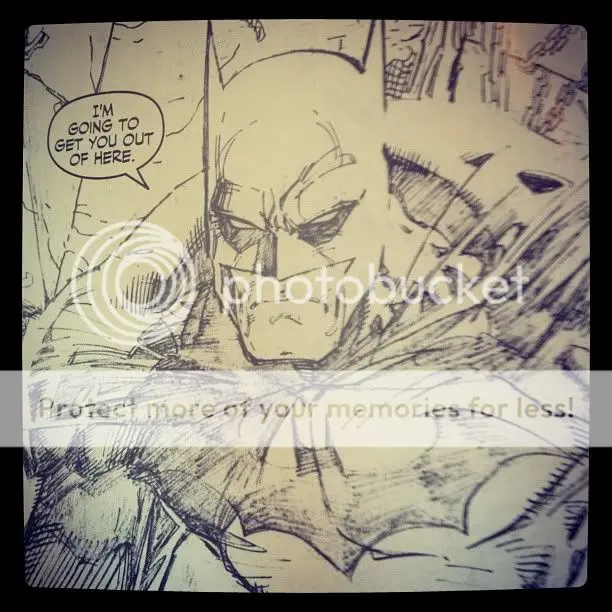It's the age old question: “What advice do you have for aspiring writers?” Considering how difficult it is to crack the publishing industry, one would hope for some kind of grand reveal or “trick,” so to speak. However, the advice authors give is usually two-fold and frustratingly simplistic. The first is to write a lot, although that would appear to be common sense as the vocation calls for you to do this. We could generalize that to pretty much anything.
Aspiring surfer: surf a lot. Aspiring rock climber: climb a lot. It’s a simple rephrasing of “practice makes perfect.” Nothing new there.
The second portion of that advice is to read, and to read often. Now I’ve perused plenty of interviews, most of them yielding that same generic answer. I agree with it, of course, however the “what” never seems to get addressed. Yes, sometimes you’ll get that “read what you want to write” line, but if you’re some young twenty-something reading nothing but Bukowski and authors like Bukowski, you’re kind of pigeon-holing yourself to write in a Bukowski-ish sort of way.
This is the part where we could get in a big long discussion about the novels you should and should not be reading—the proverbial “who’s doing it right” debate, but we’re not going to do that. Instead, we’re going to examine a few facets of writing that often go overlooked- each with their own specific focus- and how they can improve your own writing.
Paper Prompts:
There are two types of writer’s block. The first is the “I have the idea but don’t know how to write it” kind—in which case, suggestions range from taking a long walk to outlining to orgasm therapy. Pick your poison there. The other kind of block is when you’ve got absolutely nothing, and trying to write without an idea typically results in mindless rambling. Or a blank page. I’ve seen a few varieties of prompt threads to deal with the latter kind of block, either presenting a word or a picture to key off of. The writer is then supposed to create a piece based on that, but perhaps that might be too vague for your tastes.
If you’re truly short on prompts, hit up the office break room and pick up today’s newspaper. Technically speaking, this is a perfect example of informative writing: fact based, minimal frills, and a basic conveyance of the Five ‘W’s (who, what, when, where, and why). Let’s also not forget ‘how.’ For example:
John Doe (51; Springfield resident) was stabbed at the corner of 49th and Main by an unknown assailant last night around 11 p.m. The assailant took Mr. Doe’s shoes and was described as ‘tall and scary.’ Mr. Doe is in recovery at Springfield Medical.
It’s a bare bones story but a story nonetheless. All the basic elements are there. What’s missing is character development, a defined setting, the pain of the stab-wound, etc. This little assault piece could serve as a prompt. Or perhaps you like the article about how Little Miss Teen Queen had a crash diet backfire. Or the one about the guy who got his arm trapped in a snack machine. There’s literally thousands of stories breaking every day, and any one of them could spark your next piece of prose.
Exercise: write a piece of flash based on an article. See if you can turn a 100-word blip in the news into a 1,000-word story.
Watching Dialogue:
I don’t know how many times I’ve heard a young writer say “I’m bad with dialogue,” but I assure you, this particular problem crops up more than you’d think. “Bad” meaning: the rhythm is off, it sounds inauthentic, or it’s just too damn expository. Writing dialogue has numerous pitfalls, and some authors just aren’t comfortable sitting in their computer chairs and acting out the scene. That’s what this comes down to: you, the author, are not only the creator of the characters, but the screenwriter and director as well.
So what can you do to become a little more comfortable with dialogue? Obviously, there’s reading. Refer back to the formula: if you want to write good dialogue, read good dialogue. But you can also listen. Feel free to argue this, but some of the best, most memorable dialogue I’ve come across is from movies, and aren’t these what we usually end up quoting amongst our friends?
“That rug really tied the room together.”
“We need to talk about your TPS reports.”
“They call it a Royale with cheese.”
Of course, it goes beyond the catchy one-liner. Think about that opening scene of The Social Network or the DiCaprio/Nicholson rat exchange in The Departed. There are plenty of great authors who know how to handle dialogue, but guys like the Coen brothers and William Monahan are the true pros. Top tier acting helps, but the words have to be there first.
Try watching your movies with subtitles. At first, you may not recognize it, but the cadences, the syntax, the naturalistic nature of the conversations—you’re going to start picking these up as you’re now reading all the dialogue in addition to hearing it play out. The goal here is to get acclimated not only to what good dialogue sounds like, but to what it looks like so you can implement it into your own writing. On the flipside of that, you can watch really bad movies like The Room or Troll 2 and see what NOT to do.
For example:
The Room, Johnny: “Thank you, honey, this is a beautiful party! You invited all my friends. Good thinking!”
The quote is said in the context of a party for Johnny. The part about all of his friends being invited is redundant as we can clearly see that they were all invited.
The Room, Lisa: “She's a stupid bitch. She wants to control my life. I'm not going to put up with that. I'm going to do what I want to do, and that's it. What do you think I should do?”
The character shows conviction and then defaults on that conviction by asking for advice. In the context of the scene, the dialogue comes off completely awkward and clunky.
Then there's this:
[video:http://www.youtube.com/watch?v=mQ4KzClb1C4]
So next time you’re watching a movie at home, turn on the subs and actually start paying attention to the dialogue that’s being dished out: the syntax, the structure, and the verbal cues. If you truly have the problem of being “bad with dialogue,” make it your business to expose yourself to more of it. “Watch and learn,” the saying goes.
Exercise: Attempt a dialogue-only piece of flash. These are tough because you don’t get the assistance of narrative or dialogue tags.
Protagonist/Antagonist relationships:
Some writers have a hard time establishing characters. We see this in workshop from time to time when protags are minimally described and engage in action without motive. They go through the motions without any clear-cut intentions. This is when a story usually rolls along like a flat tire because there’s no rising action or conflict, no resolution. We call for “more development” and to “round them out” from their generic nature, although this leaves some writers scratching their heads because the idea of creating conflict eludes them. So let’s break this down simply:
Protagonist: the leading character or a major character in a drama, movie, novel, or other fictional text.
Antagonist: a character, group of characters, or institution who opposes the protagonist
More often than not, the protagonist is playing by a certain set of rules, has at least some sense of morality, and a motivation behind every action. The antagonist directly opposes that. To engage the two is to create conflict, and conflict is like fucking jet fuel for a story. So something like Harry Potter is good example of this because it’s your classic battle of good and evil. Perhaps an even better example of the protag/antag relationship are comic books. If you’ve already dismissed this, keep in mind that characters like Superman and Batman have been around since the 1930’s. They go beyond simply being memorable. They’re iconic.

So what composes a character like this?
They are defined by an event: For instance, Bruce Wayne and the murder of his parents. It may have taken him many years before he put on the cape and cowl, but this is what ultimately put him on the path to do it.
They live by a creed: As pertaining to Spider-Man, “With great power comes great responsibility.” It’s the steadfast conviction to this morality that defines the hero.
They have at threshold to their abilities or one principle weakness: As is the case with Superman and kryptonite.
The villain or antagonist’s role is to exploit any or all of these, at which point, you now have conflict. This is why character pairings in comic books are so unique, because Batman has a certain set of rules whereas the Joker does not. The villain does not abide by the concepts of “fair play” or “too far.” The villain deals in absolutes. Bruce Wayne may also be Batman, but the Joker is always the Joker. He’s not hindered by the burden of keeping up with two identities, which is what makes the match so compelling: Wayne is part man/part crime fighter whereas as his rogues are traditionally full-time psychopaths.
Comic books, although exaggerated in their plotlines, are far and away one of the best resources to see protagonist/antagonist relationships at peak effectiveness. Simple, straightforward, and concise in their message. There’s plenty to be learned from comics that can be applied to creating your own characters.
Exercise: Create a story around a character with a life-defining event, a moral code, and an ability (doesn’t have to be super; it can be math, science, etc.), and then oppose that character with an antagonist that attempts to exploit their weakness. Always remember that for every action there is motivation.
You have just been given three resources beyond books that contain a particular lesson in writing. Keep reading books, of course, but this should clue you in to the fact that all types of writing have something to offer. Medical journals, fashion catalogues, and gossip rags all have a particular lingo, and you never know when you might want to use it. So don’t just “read a lot,” but rather, read a lot of different things. Influence can pretty much come from anywhere, so it’s best to have a wide palette.








